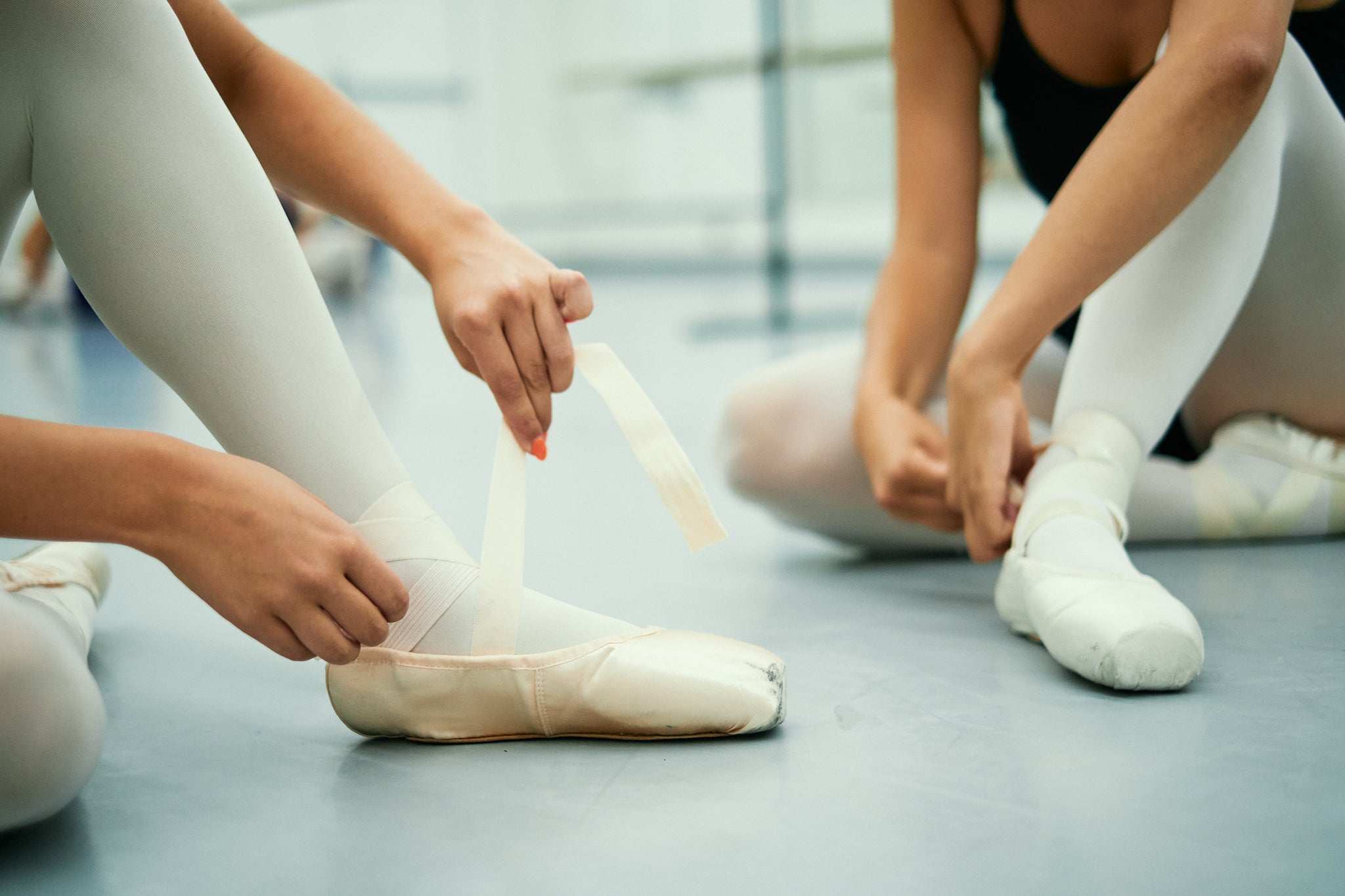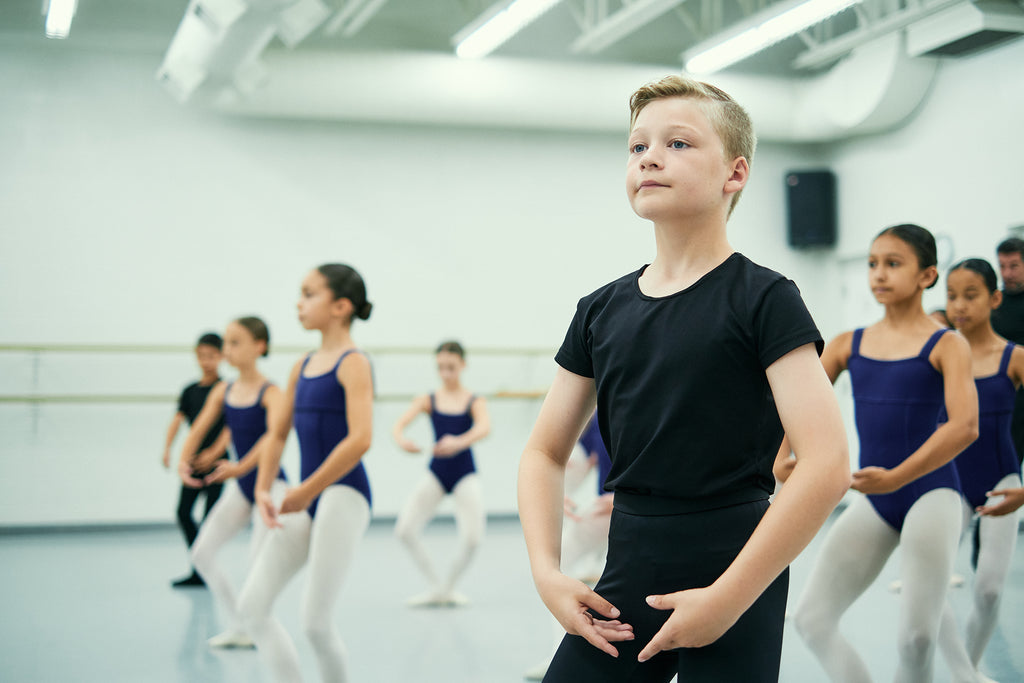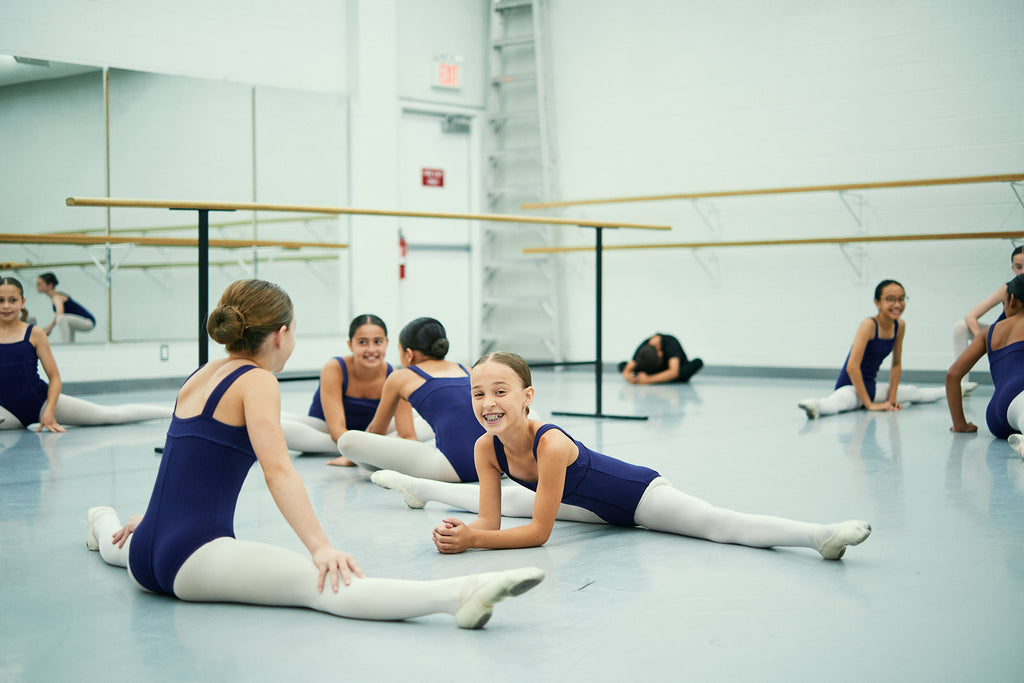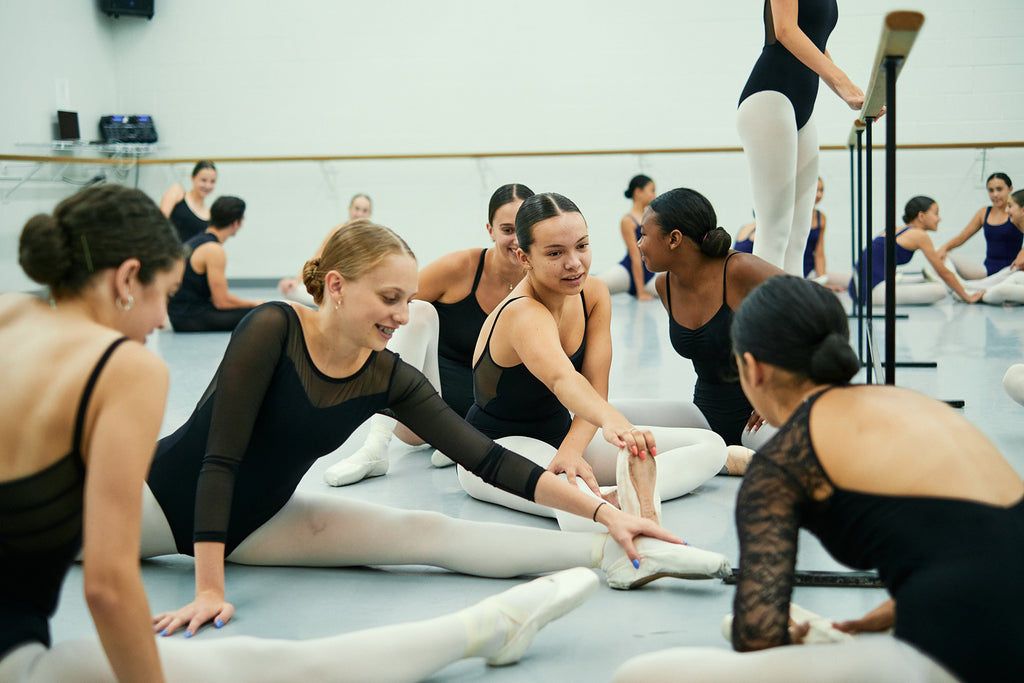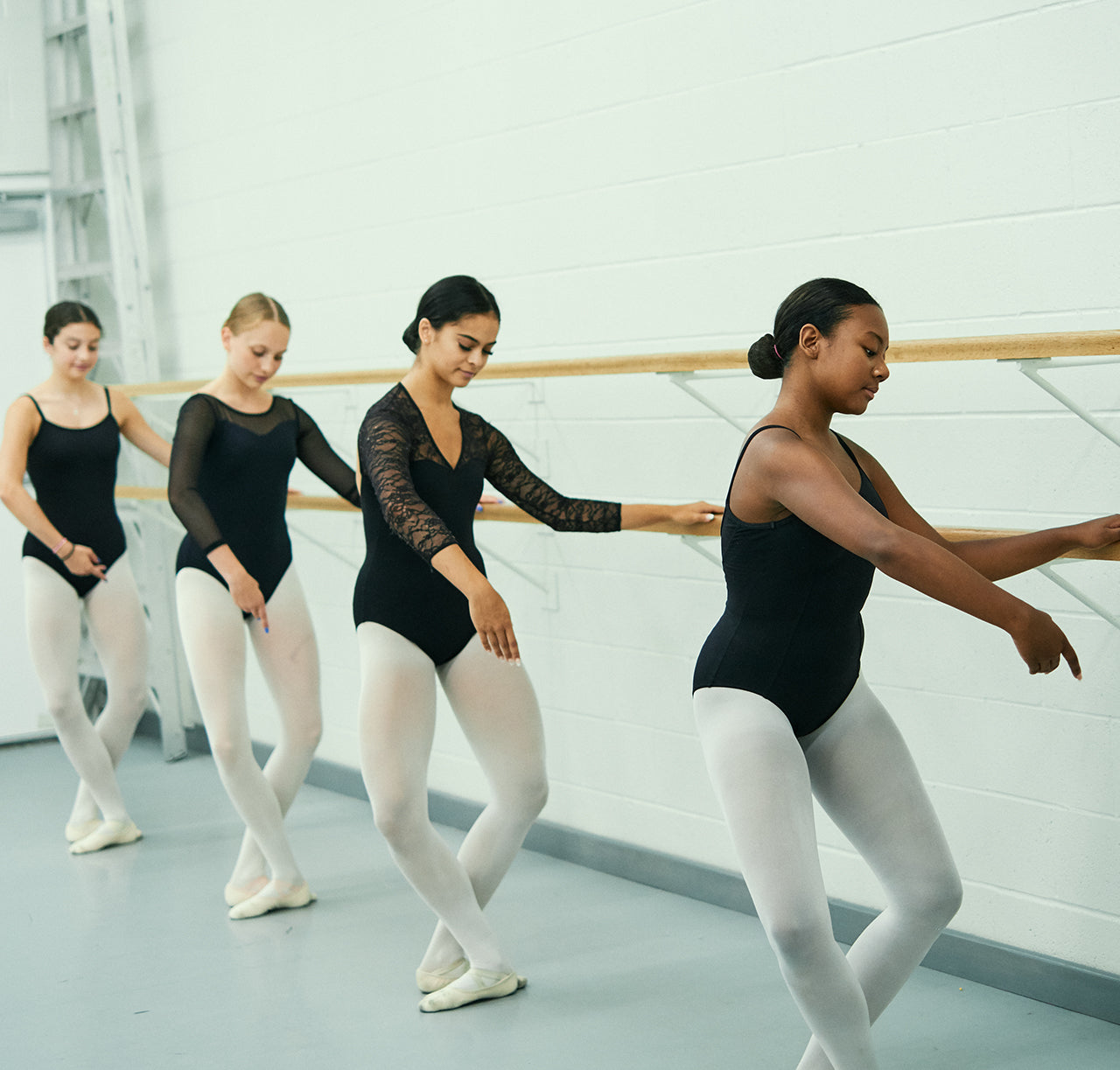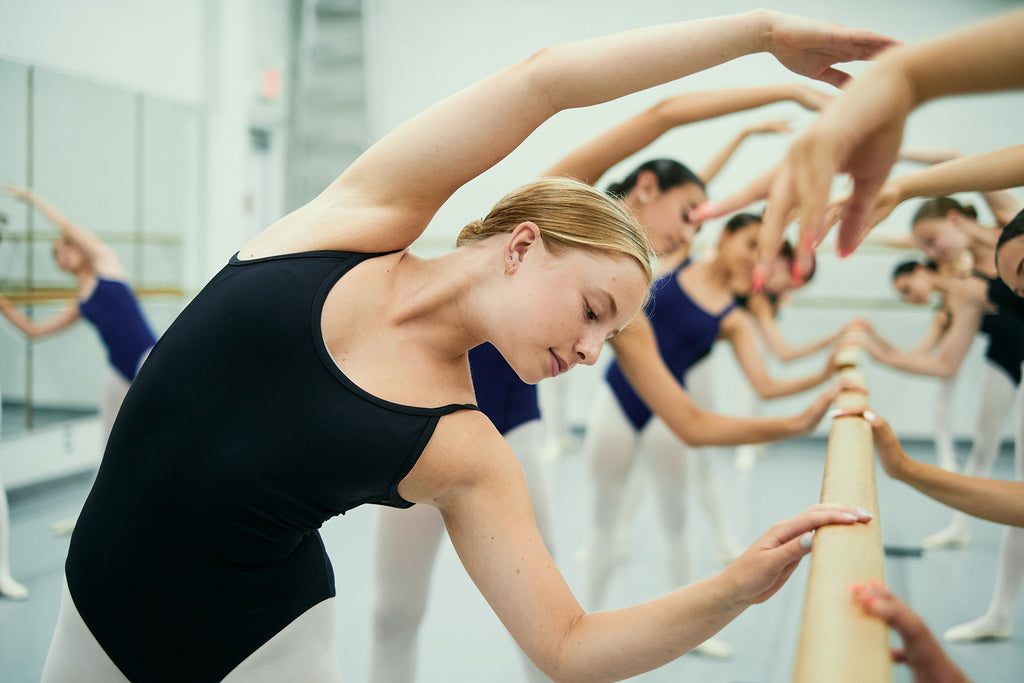My 10-year-old son Luke loves dance—unapologetically. He has never shied away from saying it loud and proud. Unlike my husband and I, he has no fear that his social status will be affected or that he might be ostracized from groups of his Canadian peers. We have many examples of his confidence that make us laugh, inspire us, and fill us with awe and pride.
Luke plays competitive hockey and when he was 8 years-old he wanted to wear a t-shirt that said “Boys dance too” into the dressing room. In a misguided effort to save him any embarrassment, I suggested that it might get sweaty from his equipment. He told me strongly that it gets just as sweaty in dance and he wore it. After the game that day, I had a mom ask me about Luke’s t-shirt. His teammates became big supporters of Luke’s dance. A few years later, right after winning the championship game, the boys gathered around Luke in the dressing room to watch my daughter compete in ballet via live stream- 15 sweaty, half-dressed boys with crazy helmet hair watching a ballet dance while “We Are the Champions” blasts from the speaker. They were jostling each other in front of the tiny screen and asking, “which one is your sister Luke?” It is my fondest hockey memory. I had tears in my eyes and smile in my heart.


Luke’s unabashed passion for dance has led him to attend Canada’s National Ballet School fulltime this September while remaining on his competitive hockey team. His friends are thrilled for him and ask so many questions about this new dimension in their male friend’s life. I hear him talking about dance online during Fortnite battles- it’s a unique dialogue that I would never have predicted- “Sam go left! Behind you Carlos! Yeah, I had swimming then Nutcracker, I got him Julian!"
To anyone doubtful of the power of dance, I say that a boy’s love for dance can not only last a lifetime, it can have culture altering effects. Luke’s teammates have attended dance competitions and some plan to attend the Nutcracker to watch him this winter with NBOC. As a dance educator, my son is helping to fulfill my mission through his unapologetic presence in dance, hockey and society.


